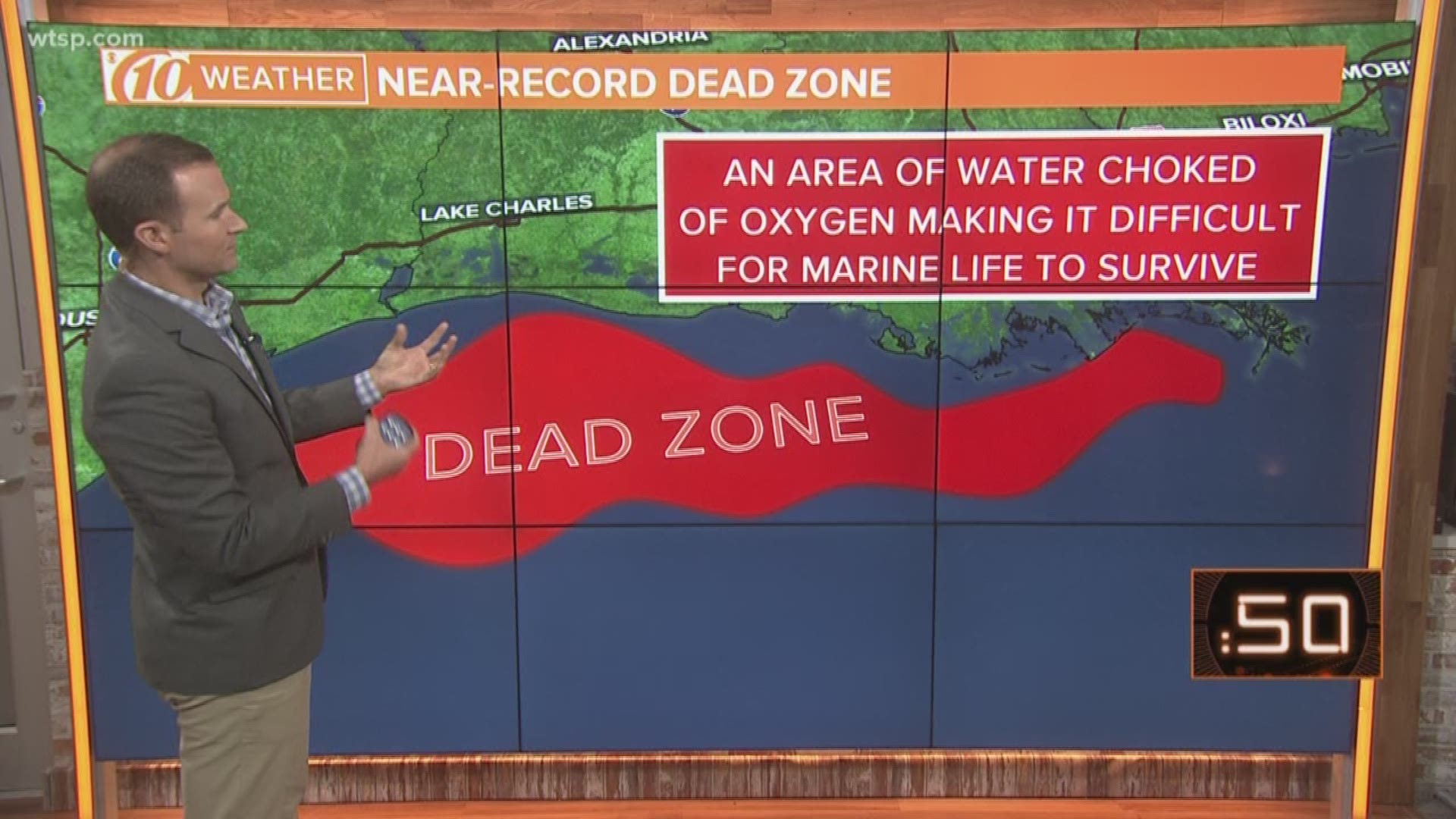NEW ORLEANS — Scientists say tropical weather stirred up the Gulf of Mexico, reducing this year's low-oxygen dead zone off Louisiana's coast to the third-smallest ever measured.
Nancy Rabalais began measuring the area where there's too little oxygen to support marine life in 1985. She says this year's covers about 2,116 square miles, but the five-year average remains much larger.
Tropical Storms Cristobal moved through the region in early June, with Tropical Storm Fay developing in early July and Hurricane Hanna crossing the Gulf of Mexico in late July.
The dead zone starts at the bottom and grows upward every summer off Louisiana, reaching into Texas waters. It’s created as calm weather lets fresh river water form a layer above the denser salt water in the Gulf of Mexico.
Fertilizer pollution, mainly from agriculture from the Plains and Midwest that travels down the Mississippi River, feeds algae, which die and then decompose, using up oxygen.
NOAA years ago estimated it costs the U.S. seafood and tourism industries $82 million a year, and more than 40 percent of the nation's seafood comes from the Gulf.
- Epidemiologists: Pinellas County could be Florida's 'poster child' for stopping spread of COVID-19
- Manatee County sergeant arrested, accused of discussing sex acts with a minor
- Another 247 people in Florida have died from COVID-19
- At least 50 killed and more than 2,700 injured in huge explosion in Beirut
- Early voting begins across Tampa Bay this week
- Disney World Splash Mountain boat sinks during ride
FREE 10 TAMPA BAY APP:
►Stay In the Know! Sign up now for the Brightside Blend Newsletter



